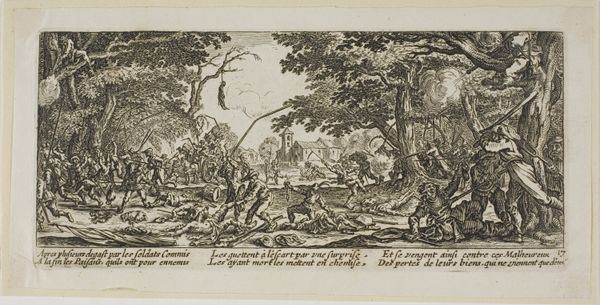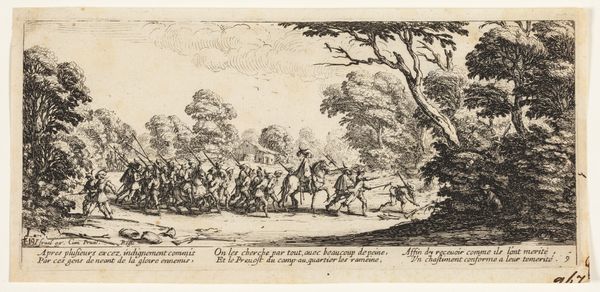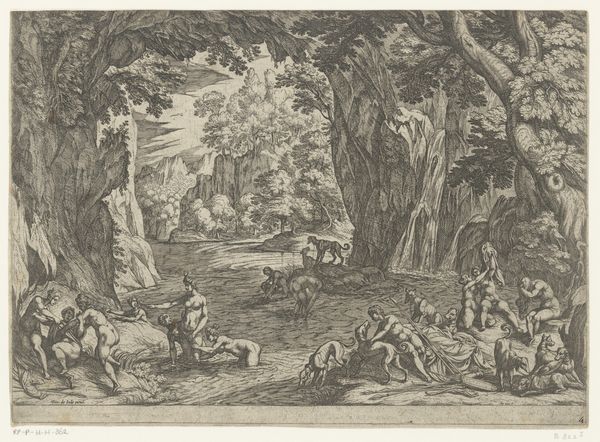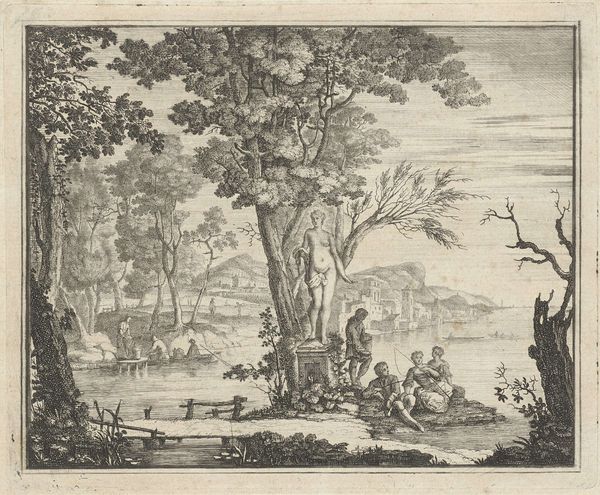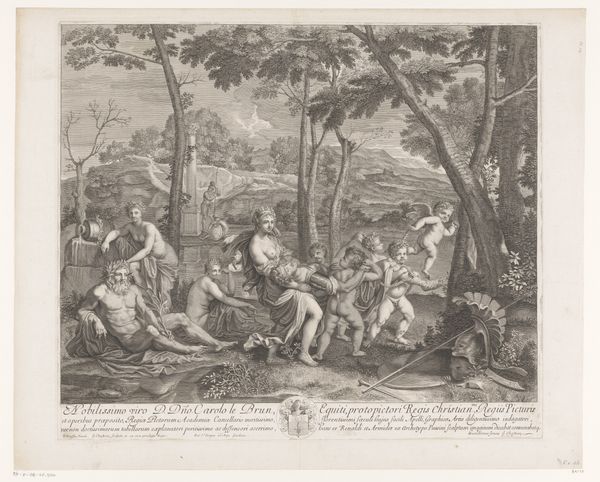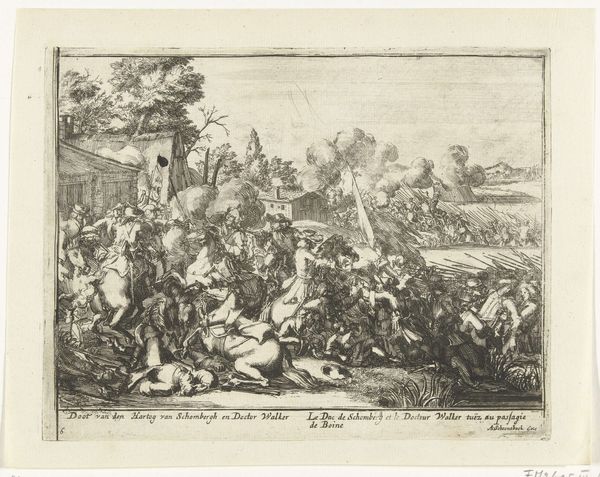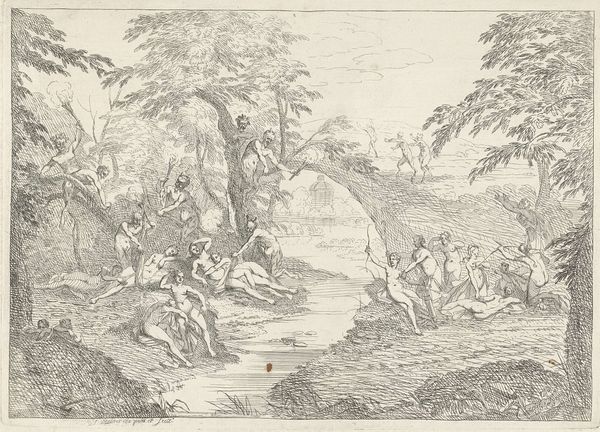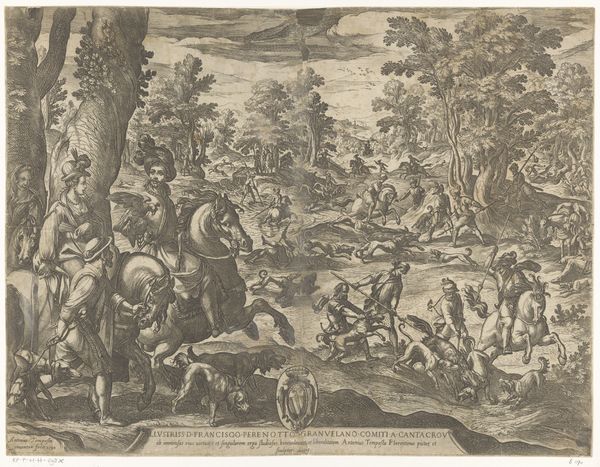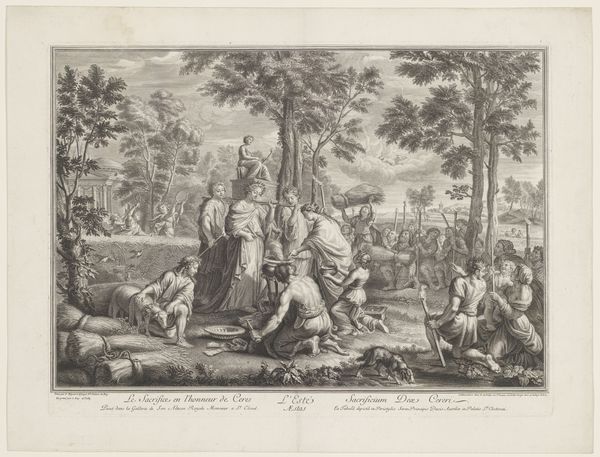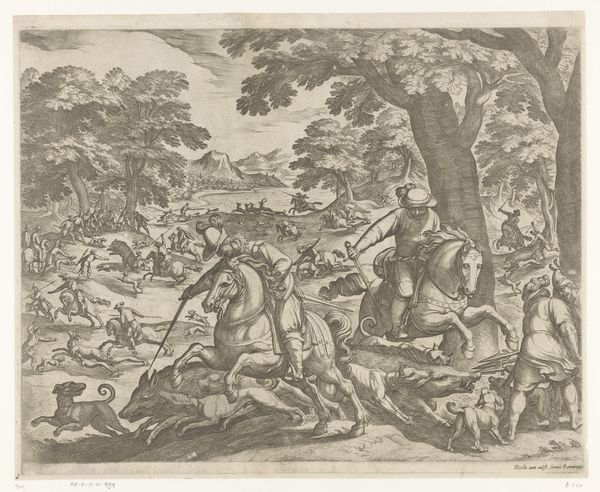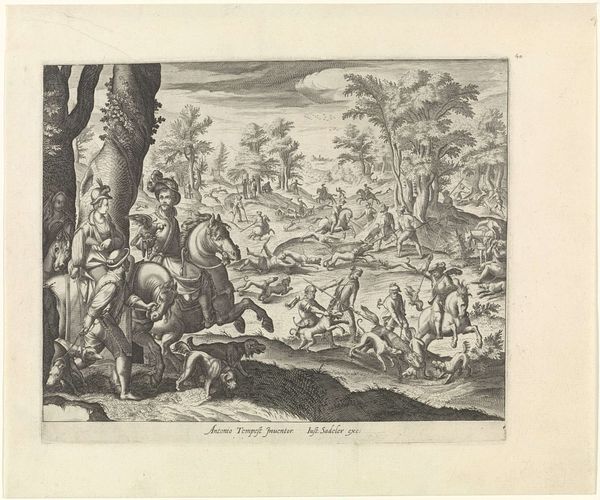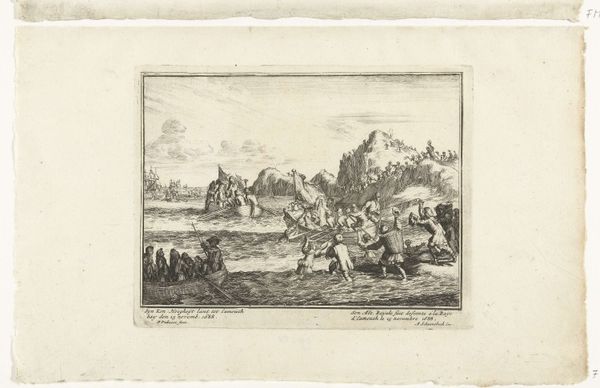
print, engraving
#
narrative-art
#
baroque
# print
#
genre-painting
#
history-painting
#
engraving
Dimensions: 83 mm (height) x 188 mm (width) (plademaal)
Curator: Let's discuss Jacques Callot's engraving, "Bønder hævner sig på soldaterne," or "Peasants take revenge on soldiers," created around 1633. It’s currently held at the SMK, the National Gallery of Denmark. Editor: My initial reaction is one of organized chaos. The composition is incredibly dense, packed with figures in dynamic poses. Despite being black and white, there’s a palpable sense of violence and unrest. Curator: Absolutely. What is fascinating is Callot's remarkable skill with the etching process here. The intricate detail achieved through the layering of lines reveals the social unrest of the period. Note the precision of the burin, manipulated to create varying depths, almost creating tones to add contrast and depth. It’s also essential to consider the labor invested in creating multiple impressions. Editor: Focusing on the visual elements, notice how the artist masterfully directs the viewer’s eye. The foreground establishes the immediate brutality, pulling us into a scene punctuated by sharp diagonals formed by lances, weapons, and figures caught in the midst of struggle. Curator: Beyond the aesthetics, it is crucial to think about what this print represented at the time. We need to think about Callot’s audience, those purchasing such a piece. These prints provided glimpses into the violence faced during periods of war, mass communication offering cautionary or propagandist perspective depending on patron context. Consider Callot’s connection with the Medici court—his social milieu informed not only what he created, but also his success. Editor: That's interesting because when focusing on formal devices, the artist uses the forest as a sort of visual trap. The looming trees with twisted branches not only frame the violent events but confine and exacerbate feelings of being mired. Callot really demonstrates command of conveying this depth through contrasting areas. The scale he conjures—the diminutive buildings in the background versus active areas foreground—is effective! Curator: The means of production enabled widespread dissemination to create this immersive vision, allowing him to address wider audiences of that era. The labor, then and now, must be acknowledged. Editor: Thinking through everything we've observed together really heightens how Callot balances design sophistication with a visceral aesthetic.
Comments
No comments
Be the first to comment and join the conversation on the ultimate creative platform.
